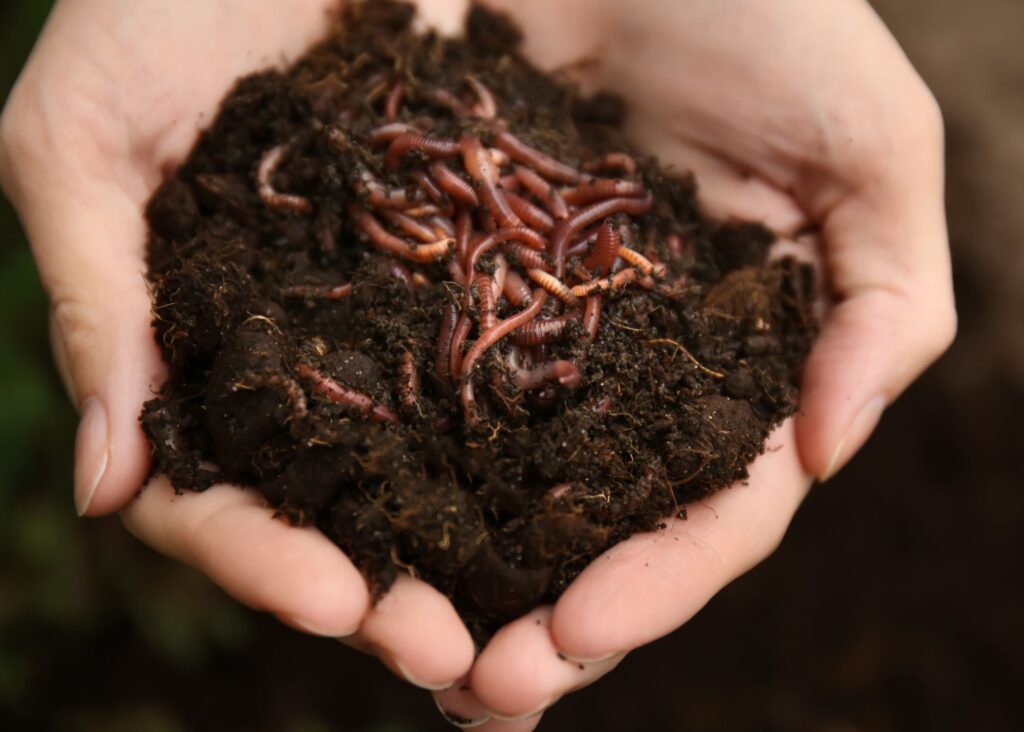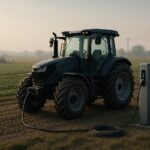For centuries, farmers have relied on traditional fertilizers to nourish their soils and sustain agricultural productivity. Yet, as the world grapples with soil degradation, climate change, and the environmental impact of synthetic fertilizers, scientists and agritech innovators are looking to an unexpected source for answers: insect waste. Insect frass—the excreta, molted exoskeletons, and uneaten feed of farmed insects—is emerging as a powerful organic fertilizer capable of revitalizing soil health. With research pointing to its rich nutrient profile and ability to enhance microbial activity, insect frass is poised to reshape modern farming.
Table of Contents
ToggleThe Nutrient Composition of Frass
Unlike conventional fertilizers, which often focus on a single macronutrient such as nitrogen, phosphorus, or potassium, frass is a balanced organic amendment. Studies show that frass is particularly rich in chitin, a natural biopolymer found in insect exoskeletons, which has been linked to enhanced soil microbial activity and disease resistance in plants. The composition of frass varies depending on the insect species and their diet, but it generally contains high levels of nitrogen (N), phosphorus (P), and potassium (K), alongside trace minerals like magnesium, calcium, and zinc.
A 2022 study published in Frontiers in Sustainable Food Systems found that black soldier fly (Hermetia illucens) frass, one of the most widely studied insect byproducts, significantly improved soil fertility while increasing plant biomass by up to 30% compared to untreated soil. Another USDA report noted that mealworm frass doubled soil carbon content and tripled nitrogen levels compared to conventional fertilizers such as ammonium nitrate and poultry litter.
Benefits of Frass Application
Enhanced Soil Fertility
The most immediate impact of insect frass is its ability to enrich soil fertility. Research has shown that incorporating frass into soil increases its organic matter content, improving the retention of water and nutrients. In an experiment conducted by Wageningen University in the Netherlands, researchers found that tomato plants grown in frass-amended soil showed 25% higher nutrient uptake than those grown with synthetic fertilizers alone.
Boosting Microbial Activity and Disease Resistance
One of the most promising aspects of frass is its impact on soil microbiota. The chitin present in frass serves as a substrate for beneficial microbes, which, in turn, help suppress plant pathogens. Studies demonstrated that soils treated with insect frass exhibited a higher population of beneficial bacteria and fungi, leading to increased resistance against root rot and fungal infections. This suggests that frass could play a vital role in reducing dependency on chemical pesticides.
Improving Soil Structure
Beyond its nutrient profile, frass contributes to soil structure improvement. The organic matter in frass enhances soil aeration and porosity, making it easier for plant roots to access nutrients. Farmers who have adopted frass as a soil amendment report better soil aggregation, reducing erosion and improving long-term soil health.
How Frass Compares to Traditional Fertilizers
While synthetic fertilizers provide a quick nutrient boost, they often lead to nutrient leaching, soil acidification, and microbial imbalances over time. In contrast, frass releases nutrients more gradually, preventing runoff into water systems and promoting sustainable soil management. A comparative analysis conducted by the University of California, Davis found that frass-amended soils retained 40% more nitrogen after irrigation than fields treated with synthetic fertilizers.
From an environmental perspective, frass production has a much lower carbon footprint than traditional fertilizers. The insect farming industry, particularly black soldier fly larvae production, generates significantly fewer greenhouse gas emissions than livestock manure or chemical fertilizer manufacturing. This makes frass a climate-friendly alternative in regenerative agriculture.

Case Studies and Real-World Applications
Black Soldier Fly Frass in Large-Scale Agriculture
Companies like Ÿnsect in France are already commercializing insect frass for agricultural use. In Canada, a pilot project integrating black soldier fly frass into wheat farming resulted in a 15% increase in grain yield while reducing the need for synthetic nitrogen fertilizers by 30%.
The Role of Dung Beetles in Natural Soil Regeneration
Though black soldier flies dominate discussions on frass applications, dung beetles have long played a critical role in soil health. Researchers have found that dung beetle activity significantly improves soil nutrient cycling, increasing nitrogen availability for pasture grasses. Their natural incorporation of animal manure into soil provides insights into how insect-driven soil amendments can enhance sustainability in livestock-based farming systems.
Challenges and Considerations
Despite its many benefits, frass is not without its challenges. One of the main hurdles is standardization—nutrient content varies widely depending on the insect species, diet, and farming conditions. To address this, regulatory bodies such as the European Food Safety Authority (EFSA) have established guidelines requiring frass to undergo heat treatment before commercial distribution, ensuring it is free from pathogens.
Another consideration is the potential presence of anti-nutritional factors in frass. While generally safe for plants, excessive application could lead to nutrient imbalances. More research is needed to determine optimal application rates across different soil types and crops.
The Future of Insect Frass in Agriculture
As the insect farming industry continues to expand, the supply of frass is expected to increase, making it a more accessible and cost-effective alternative to traditional fertilizers. Researchers are exploring its integration into hydroponic and vertical farming systems, which could revolutionize urban agriculture. Furthermore, agritech startups are developing precision application methods, such as frass-based biostimulants tailored to specific crops and soil conditions.
With the global fertilizer market projected to exceed $240 billion by 2027, frass represents a promising sustainable alternative that aligns with circular agriculture principles. By recycling organic waste into nutrient-rich soil amendments, insect frass offers a path toward regenerative farming and resilient food systems.
Conclusion
Insect waste may seem like an unlikely hero in the fight for sustainable agriculture, but its potential is undeniable. Backed by scientific research and growing real-world applications, frass is proving to be more than just a byproduct—it is a game-changer for soil health and environmental sustainability. As policymakers, farmers, and agritech companies recognize its benefits, insect frass could soon become a staple in the global agricultural toolkit. The future of farming, it seems, may rest in the hands—or rather, the waste—of insects.





